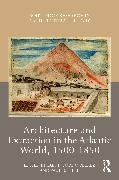En savoir plus
This edited collection explores the landscapes of extraction as material networks that brought people, space, and labor together in harvesting raw materials, cultivating agriculture for export-level profits, and circulating raw materials and commodities in Europe, Africa, and the Americas from 1500 to 1850.
Table des matières
List of figures
List of contributors
Introduction: Building for Atlantic Extraction.Luis Gordo-Peláez and Paul NiellChapter 1. Early Modern Mining Exchanges across EmpiresJanna IsraelChapter 2. Purchasing a Poisoned City: Indigenous Andeans and Urban Space in Sixteenth-Century HuancavelicaMark P. DriesChapter 3. New Functions of Mining Heritage in MexicoMiguel Ángel Sorroche CuervaChapter 4. The Ice House: Industry and Ritual in the Nineteenth-Century Frozen Water TradeLouisa IarocciChapter 5. Contesting the Colonial Illu: Sealing and Social Change in Kalaallit Architecture, 1750-1860Kirstine Møller and Bart Pushaw Chapter 6. From Ireland to Barbados: Architecture of Extraction in British ColoniesLee MorrisseyChapter 7. Whiteness Among People of Color at Atlantic World Extraction Sites: A Comparative Study of the Indigenous Diamond Hill and Black Melrose PlantationsBarry L. StiefelChapter 8. Absentee Architecture: Remote Building Across the British Atlantic, c. 1800Jonah RowenChapter 9. Space, Science, and Slavery in Havana's Botanical GardenLee SessionsChapter 10. The World's Greatest Depot: West India Docks, Warehouses, and FlexibilityGeorgios EftaxiopoulosChapter 11. Choice Spirits or the Alloy of Slavery: Samuel Blodget's First Bank of the United StatesPeter MinoshChapter 12. Castle Brew: Dreams Realized and Dreams DevastatedCourtnay MicotsChapter 13. Architecture of Indigo Dye Extraction in the Eighteenth-Century Atlantic Context: The Case of Charleston and Rio de JaneiroAlexander Lima ReisChapter 14. From Caravans to Railroads: Trails, Architecture, and Urban Networks in Rio Pardo's Eighteenth- and Nineteenth-Century Landscapes of ExtractionRafael Augusto Silva Ferreira and Renata Baesso PereiraBibliography
Index
A propos de l'auteur
Luis Gordo Peláez is Assistant Professor in the Department of Art, Design and Art History at California State University, Fresno. His work examines the urban reform projects and public works agenda of the late colonial Mexican cities, particularly in Bourbon Guanajuato and the region of El Bajío.
Paul Niell is Associate Professor in the Department of Art History at Florida State University. His research focuses on the art, architecture, and material culture of the Hispanophone Caribbean in the late eighteenth and early nineteenth centuries.

